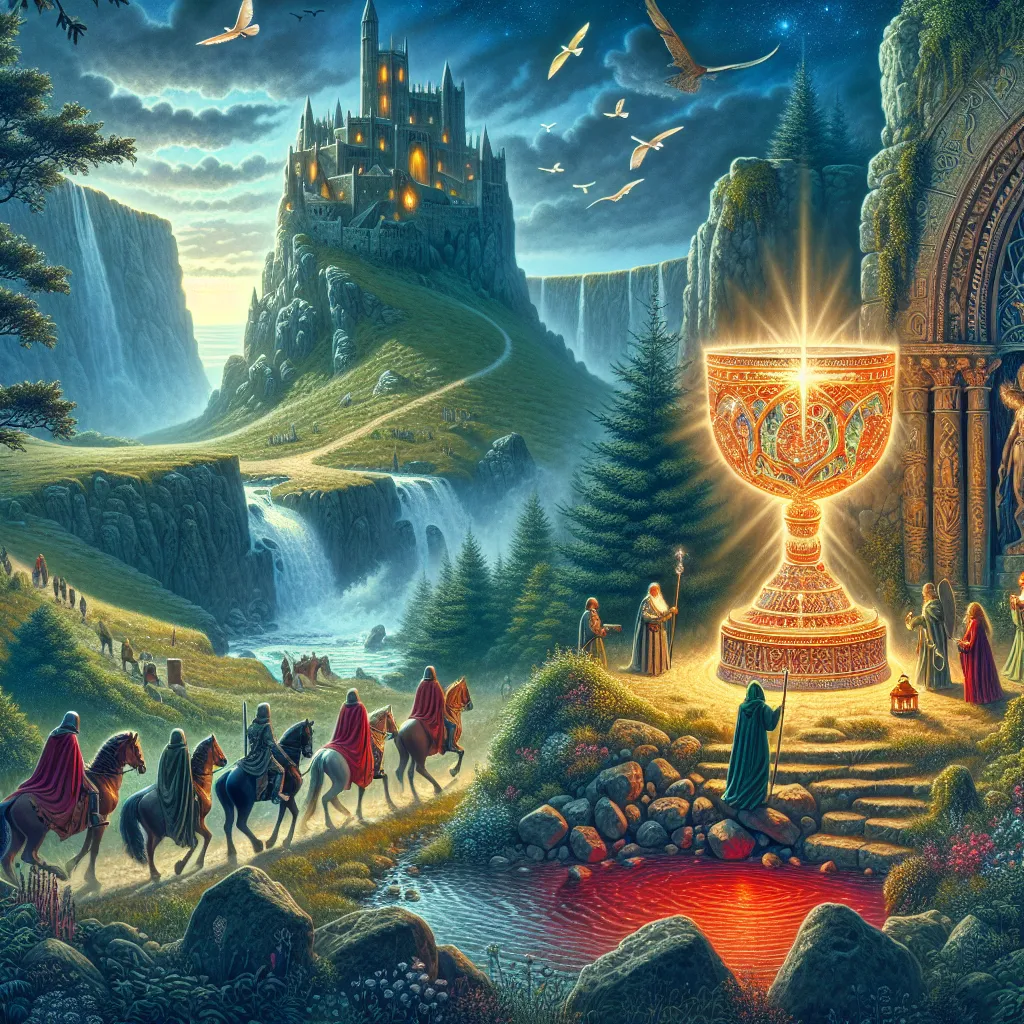For 2,000 years, generations have been enchanted by a quest, led by King Arthur and the Knights of the Round Table, in search of a sacred cup that grants immortality and enlightenment. This legendary pursuit is a thrilling journey through some of Britain’s most historic and mysterious sites: the quest for the Holy Grail.
While the search for the Holy Grail has taken treasure hunters worldwide, one enduring legend suggests that the Grail was brought to Britain by Jesus Christ’s great uncle, Joseph of Arimathea. When Jesus was dying on the cross, Joseph collected His blood in a bowl. Following Jesus’ death, the Archangel Raphael instructed Joseph to bring this sacred bowl—the Holy Grail—to Britain, where it was hidden in the most holy place in the land. Since then, the search for the Holy Grail has continued, bringing adventurers to locations like Glastonbury, Tintagel, and Rosslyn Chapel.
Glastonbury is shrouded in mystery, its waters allegedly turning red with Christ’s blood. Tintagel, the birthplace of King Arthur, and Rosslyn Chapel, a treasure trove of secrets, are also pivotal points in this legendary hunt. The Grail is described in various ways: a dazzling jewel-encrusted goblet or a simple wooden bowl fit for a carpenter. Its origins predate Christianity, drawing on the pagan belief in a sacred cauldron, a symbol of fertility and renewal.
The Holy Grail is the ultimate relic, believed to grant eternal youth, inspiration, and fertility. It can heal the sick but only the pure-hearted can approach it, with the impure witnessing its sudden disappearance. The legend of Joseph of Arimathea, who was a wealthy tin merchant, says he traveled to Britain following Jesus’ death, carrying the Holy Grail to Glastonbury, known as Avalon, where spiritual and material worlds meet. The lore tells of Joseph planting his staff in the ground where it transformed into a living hawthorn bush, signifying Glastonbury as the Grail’s resting place.
Thousands of visitors are drawn to Glastonbury each year, each on their quest, seeking spiritual enlightenment or perhaps a physical relic. One legend says Joseph buried the Grail under Glastonbury Tor at the Chalice Well, where water flows red. Others believe it could be hidden in Rosslyn Chapel, with its cryptic carvings and suspected secret chambers beneath the structure.
The quest for the Grail has also intertwined with the legendary figure of King Arthur. Arthur and his knights sought the Grail to heal the land and achieve spiritual perfection. Tintagel Castle, a place steeped in Arthurian legend, revealed a 5th-century inscription hinting at the real Arthur. This has only deepened the intrigue surrounding the quest.
The Holy Grail, however, eludes capture. Rosslyn Chapel, fraught with symbols and mystery, remains a possible resting place. Despite modern techniques like metal detectors, the Earl of Rosslyn refuses excavation, leaving many secrets untold. Perhaps the Holy Grail isn’t a physical object but rather a symbol of our yearning for spiritual wholeness.
The search for the Holy Grail is a quest for meaning, a journey as much about the soul as it is about the relic. It’s a path open to everyone, inviting us to discover the sacred within our lives. Even as locations like Tintagel, Glastonbury, and Rosslyn remain centers of mystery, the quest itself continues to inspire hope and wonder. Whether we find the Holy Grail or not, the journey itself brings us closer to understanding our innermost selves.






